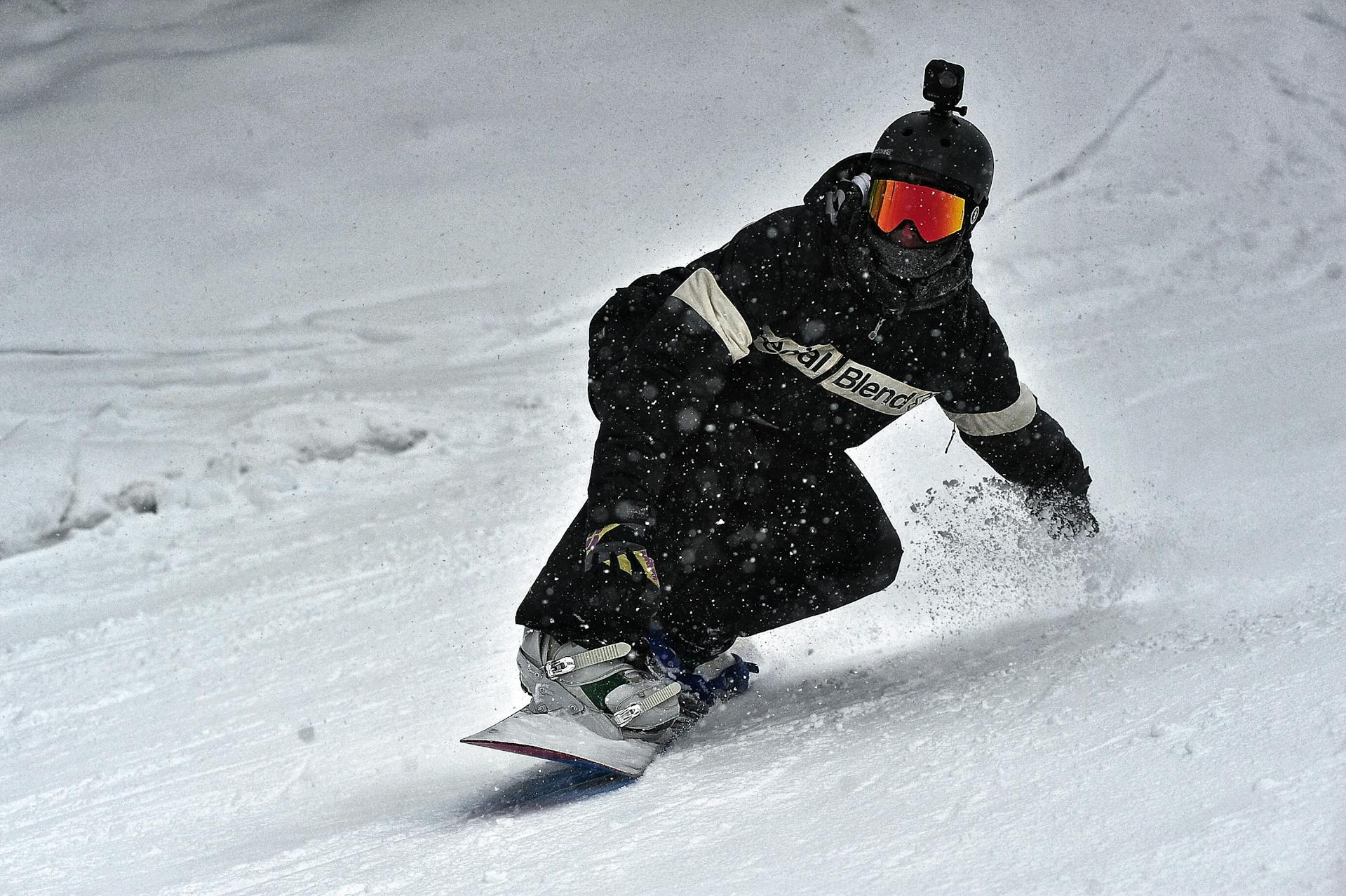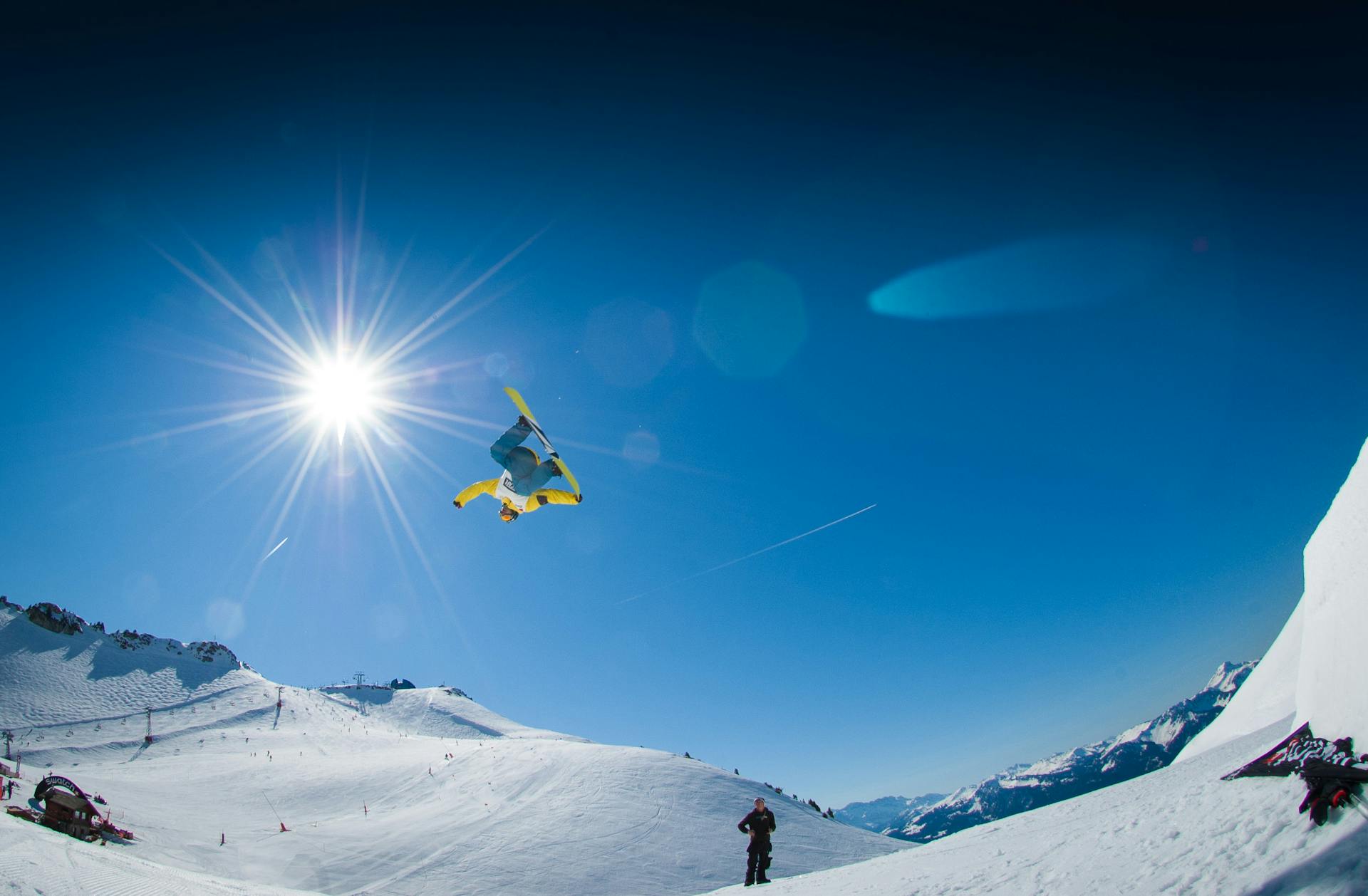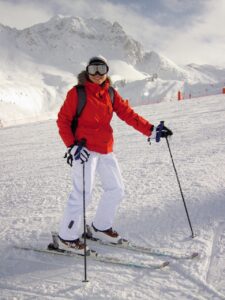Introduction
As the winter season beckons, adrenaline enthusiasts and fitness fanatics alike turn their excitement towards snowboarding, a thrilling sport that not only promises adventure but also a significant calorie burn. Understanding how many calories does snowboarding burn is essential not only for sports aficionados eager to quantify their physical exertion, but also for individuals looking to optimize their winter workouts. The dynamic nature of snowboarding, encompassing both intense physical challenge and exhilarating fun, makes it a unique snowboarding workout, appealing to those who seek to combine fitness with pleasure.
This comprehensive guide dives into the factors affecting calorie burn during snowboarding, offering insights into how weight, intensity, terrain, and duration contribute to the overall calories burned in snowboarding. Moreover, it compares snowboarding exercise with other winter sports, such as skiing, answering the common question of how many calories does skiing burn in relation to snowboarding. For those eager to maximize their snowboarding exercise, this guide provides practical tips to increase calorie expenditure, ensuring readers leave with a well-rounded understanding of how many calories do you burn snowboarding and how to enhance their snowboarding workout for peak physical benefit.
Factors Affecting Calorie Burn During Snowboarding
Several factors influence the number of calories burned during snowboarding, making it a dynamic and effective workout. Here are the key elements:
Body Weight and Composition
The body weight of an individual plays a significant role in determining calorie expenditure. Generally, a person who weighs more will burn more calories because their body requires more energy to perform activities.
Intensity and Duration of Snowboarding
The intensity of the snowboarding session greatly affects calorie burn. Engaging in vigorous runs or performing complex tricks and maneuvers increases the intensity, thereby boosting the calorie expenditure. Additionally, the duration spent on the slopes directly correlates with the total calories burned. Longer sessions mean more calories burned, provided the intensity is maintained
Snowboarding Terrain
The terrain on which one snowboards also impacts the calorie burn. Flat terrains offer less resistance and thus, lower calorie burn compared to steep or varied terrains which require more energy and effort, thereby increasing the calorie burn. Moreover, snowboarding in colder temperatures can increase calorie expenditure as the body works harder to maintain its core temperature.

Each of these factors contributes to the overall effectiveness of snowboarding as a calorie-burning exercise, making it not only a thrilling sport but also an excellent fitness activity.
Comparison with Other Winter Sports
Downhill Skiing
Downhill skiing, often celebrated for its fun and stress-relieving qualities, also serves as a robust cardiovascular and leg workout. According to the nonprofit trade association Snowsports Industries America, an hour of alpine skiing typically burns around 500 calories, slightly more than snowboarding, which burns about 450 calories. The Compendium of Physical Activities provides a metabolic equivalent (MET) rating for downhill skiing of 4.3 for light effort and 5.3 for moderate effort. This translates to a calorie expenditure of approximately 293 to 361 calories per hour for a 150-pound individual. Moreover, skiing involves using poles to propel oneself on flat or uphill terrain, adding an upper-body component to the exercise that snowboarding does not typically offer.
Cross-country Skiing
Cross-country skiing is recognized as one of the most comprehensive cardiovascular sports, engaging nearly every muscle group in the body. It burns about 472 calories per hour, providing a more intense workout compared to downhill skiing and snowboarding. The activity not only targets the legs but also involves the triceps, biceps, upper and lower back, abdominals, obliques, glutes, hip abductors, quadriceps, hamstrings, and calves. For those looking to maximize calorie burn, adding high-intensity interval training (HIIT) or resistance through a weighted vest can significantly enhance the workout’s effectiveness.
This comparative analysis highlights that while all these winter sports are effective for burning calories and improving fitness, each offers unique benefits and challenges, making them suitable for different fitness goals and preferences.
Maximizing Calorie Burn While Snowboarding
Incorporating More Intense Runs
To significantly enhance the calorie-burning potential during snowboarding sessions, engaging in more intense runs is highly effective. Tackling steeper slopes, navigating through moguls, or accelerating on long, straight runs can notably increase the calorie burn.
Adding Tricks and Jumps
Integrating tricks and jumps into your snowboarding routine not only adds an element of thrill but also boosts the intensity and calorie expenditure. Performing maneuvers such as ollies, 180s, and other aerial tricks demands greater muscle engagement and cardiovascular effort, thereby augmenting the overall calorie burn.

Hiking Uphill Instead of Using Chairlifts
Another potent strategy to maximize calorie burn is to hike uphill instead of using chairlifts. This approach engages leg muscles intensely and elevates the heart rate, significantly increasing calorie expenditure. The uphill climb also adds a robust physical challenge to your snowboarding adventure, making it an excellent full-body workout.
Conclusion
Throughout this guide, we’ve explored the dynamic aspects of snowboarding and how it stands as not only a thrilling sport but also an effective calorie burning exercise. Key takeaways include the influence of body weight, intensity, duration, and terrain on calorie expenditure during snowboarding, with practical tips on maximizing this through more intense runs, adding tricks and jumps, and choosing to hike uphill. The comparison with other winter sports like skiing and cross-country skiing provided a broader perspective on snowboarding’s unique benefits in fostering physical fitness amidst the winter season’s chill.
If you’re intrigued by how snowboarding compares to other adventure sports, you might find the exploration of Sandboarding equally captivating, shedding light on how these two sports intertwine and differ. Is Sandboarding Like Snowboarding? Find out here. Furthermore, the implications of choosing snowboarding as a winter workout emphasize not just the sport’s fun element but its substantial health benefits, offering a compelling option for those aiming to stay active during the colder months. Encouraging readers to engage in further research or personally experience the thrills and physical rewards of snowboarding not only enriches one’s sporting life but also contributes positively to one’s physical well-being.
FAQs
1. How many calories are typically burned while snowboarding?
Snowboarding generally burns about 450 calories per hour, according to Snowsports Industries America. This calculation does not include the time spent on ski lifts.
2. Can snowboarding help with weight loss?
Yes, snowboarding can aid in weight loss. It not only burns calories but also helps in building and maintaining muscle. Additionally, being active in colder temperatures can increase calorie burn due to the body’s effort to regulate its temperature.
3. What is the average calorie burn for a day of skiing?
The amount of calories burned skiing can vary widely depending on the intensity of the activity. A leisurely day on the slopes might burn about 300–400 calories per hour, while a more vigorous day involving tougher maneuvers can exceed 600 calories per hour.
4. Which requires more physical effort, snowboarding or skiing?
Snowboarding is generally more physically demanding than skiing, particularly for beginners. The frequent falls and the need to get back up make it a comprehensive workout that requires a good level of overall fitness and strength.


